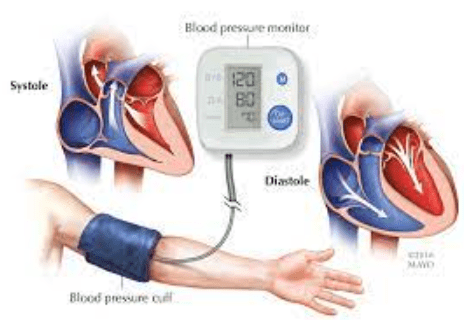Elevating Hypertension Diagnosis: The Stand-Up Approach to Blood Pressure Measurement

In a recent scientific escapade, researchers from the University of Texas (UT) Southwestern Medical Center in Dallas discovered that standing blood pressure (BP) takes the lead role in diagnosing hypertension among adults, leaving seated BP in the dust. With a touch of wit and a dash of science, let’s dive into the findings.
READ: Ohio State Alum Austin Mack Dominates Grey Cup, Guides Montreal Alouettes to CFL Glory
Table of Contents
A Comic’s Journey into BP Measurement
John M. Giacona and his crew at UT Southwestern set out on a mission to unravel the secrets of standing BP. Imagine BP as the lead actor in a dramatic play, where sensitivity and specificity steal the spotlight. The script, inspired by Youden’s Index,
provided the cues for standing BP, while seated BP followed the traditional plot with cutoffs at 130/80 mm Hg and 140/90 mm Hg. The cast? A diverse group of 125 participants with an average age of 49 years.
The Seated Star’s Performance: A Balancing Act
The researchers revealed the satirical performance of seated systolic BP, with sensitivity and specificity playing the roles of comedy and tragedy at 43 and 92 percent, respectively. It seems the seated star struggled to steal the show in hypertension diagnosis.
Enter the Standing Sensation: BP Takes Center Stage
Cue the drumroll for standing systolic BP/diastolic BP, with cutoffs straight from the hypertension guideline playbooks. According to the American College of Cardiology/American Heart Association, the magic numbers were 124/81 mm Hg, while the European Society of Hypertension whispered 123.5/83.5 mm Hg. The standing sensation boasted a sensitivity of 71 percent and a specificity of 67 percent, giving the seated star a run for its money.
The Grand Finale: Standing BP vs. Seated BP
As the curtains closed, the researchers unveiled the grand finale. Standing systolic BP stole the show with an area under the receiver operating curve of 0.81, outshining the seated systolic BP’s 0.70. When defining hypertension as an average 24-hour systolic BP ≥125 mm Hg, standing BP proved its mettle, scoring a solid 0.80. The addition of standing to seated systolic BP enhanced hypertension detection, leaving the seated star in the shadows.
The Director’s Cut: A Prescription for Accuracy
Lead author Wanpen Vongpatanasin, M.D., from UT Southwestern, delivered the punchline: “Our study shows that measuring blood pressure in the standing position may offer a more accurate way to determine if someone has hypertension.”
It seems like BP has a preference for standing ovations and a knack for stealing the spotlight, making the case for a director’s cut in the world of hypertension diagnosis. So, the next time your BP is on stage, make sure it’s ready for a standing ovation!






